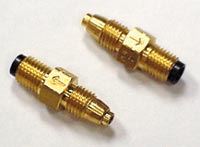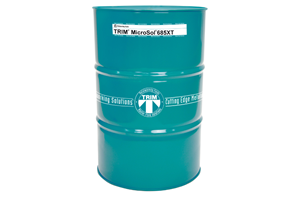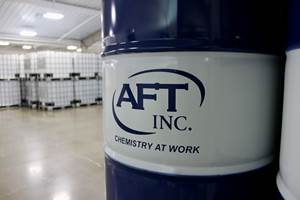Troubleshooting Your Way Oil System
An expensive lesson that many shops learn too late is that the automatic oil system on their CNC machine tool may not be completely automatic. Since the automatic oil system is designed to give a warning when the oil tank is empty, many machinists simply assume all is well if the alarm doesn't go off.
An expensive lesson that many shops learn too late is that the automatic oil system on their CNC machine tool may not be completely automatic. Since the automatic oil system is designed to give a warning when the oil tank is empty, many machinists simply assume all is well if the alarm doesn’t go off.
Well, often the alarm never goes off because the tank may never actually be empty. You simply don’t know the lube system isn’t working properly.
Here’s a practical guide to troubleshooting your automatic way oil system before damage occurs. It was compiled by Kenneth Skonieczny, president of Kentech Incorporated (Worcester, Massachusetts).
In general, an automatic way lube problem involves one of two problems. One is oil volume, meaning your way lube system is not pumping the correct amount of way oil. The second involves oil flow, which means all or part of the lubrication distribution system is starved for oil.
Some indicators that there may be a problem include inconsistent oil usage. The oil reservoir needs filling infrequently—perhaps only once every 40 hours or so. Moreover, there may be axis positioning and repeatability problems. Sometimes, one or more axes may make noise when operating. Or, the axis drive motor overload alarm may come on even when the load seems light.
Possible causes for way lube malfunction begin with an inspection of the lube pump. If it’s burned out, obviously no oil is being moved to the way system. There are generally two types of pumps used on machine tools.
The first type uses a continuously running motor that rotates a priming cam. The cam moves a lever, which at the top of the stroke pushes oil through the lines. This cycle can take from five to 20 minutes to complete. To check this pump, take a flashlight and look to see if the motor is operating. Remember, it moves slowly.
The second type of pump operates directly off a timer set in the control. To check this type of motor, observe the cycle-on light, usually located on the oil tank. Make sure this light comes on every five to 20 minutes to confirm the pump is working.
If the pump is working, the next item to check is oil flow. A knob, located at the pump, will allow adjustment of the amount of flow with each cycle of the pump. To check this, assume that with regular oil usage in an eight-hour shift the tank should be refilled every two to three days. You can also visually look for oil flow on the ways.
Another answer to insufficient flow is the pump filter. It’s located between the tank and the oil line. To check the filter, disconnect the oil line on the machine side of the filter. Let the pump cycle. If the oil flow is strong, the filter is good. If not, replace the filter.
A broken oil line can deprive the machine of oil. A check for this involves monitoring how quickly the "shot" of oil for a cycle goes out of the pump. If it empties very quickly, look for a broken line.
The opposite of a broken line involves oil flow that is too slow. In this case the metering valves, located at the ends of the oil lines, may be clogged. These valves pace the flow rate from the pump to help build pressure in the lines. They also meter the amount of oil for different areas of the system. Because these valves are difficult to check, it’s recommended that you replace them every year as routine maintenance.
Understanding the way lube system and keeping it in good working order are key to long machine life. It’s a cheap way to save big money down the road. MMS
Related Content
Master Fluid Solutions Semisynthetic Coolant Inhibits Corrosion
Trim MicroSol 685XT is designed to provide enhanced corrosion inhibition on all ferrous and nonferrous metals.
Read MoreAFT's Semi-Synthetic Coolant Extends Sump Life
Advanced Cool 2200 provides high visibility while machining, keeping the machine and parts clean with no odor issues.
Read MoreUnist's Electronic Control Regulates Lubricant Delivery
Unist’s Pulse R electronic control ties into the system control solenoid valve and takes the place of a pneumatic pulse generator timer or logic block.
Read More168 Manufacturing's Coolant System Automates Delivery
PMTS 2023: FullShop systems monitor and replenish all CNC machine sumps with optimized top-off ratios before the coolant runs low.
Read MoreRead Next
The Cut Scene: The Finer Details of Large-Format Machining
Small details and features can have an outsized impact on large parts, such as Barbco’s collapsible utility drill head.
Read More3 Mistakes That Cause CNC Programs to Fail
Despite enhancements to manufacturing technology, there are still issues today that can cause programs to fail. These failures can cause lost time, scrapped parts, damaged machines and even injured operators.
Read More














.png;maxWidth=300;quality=90)












